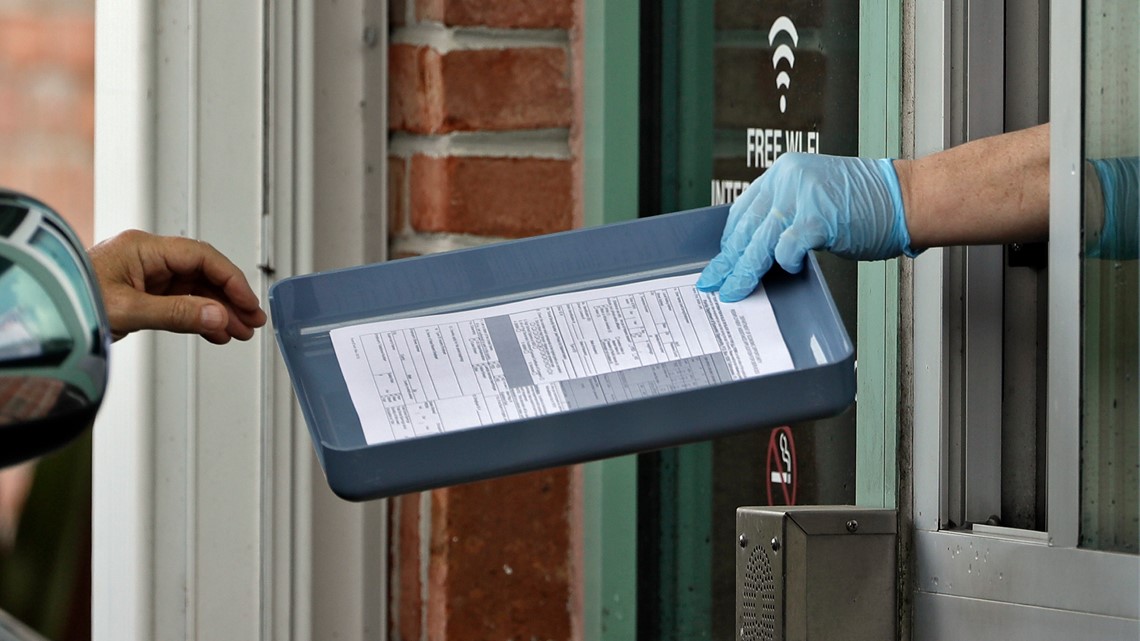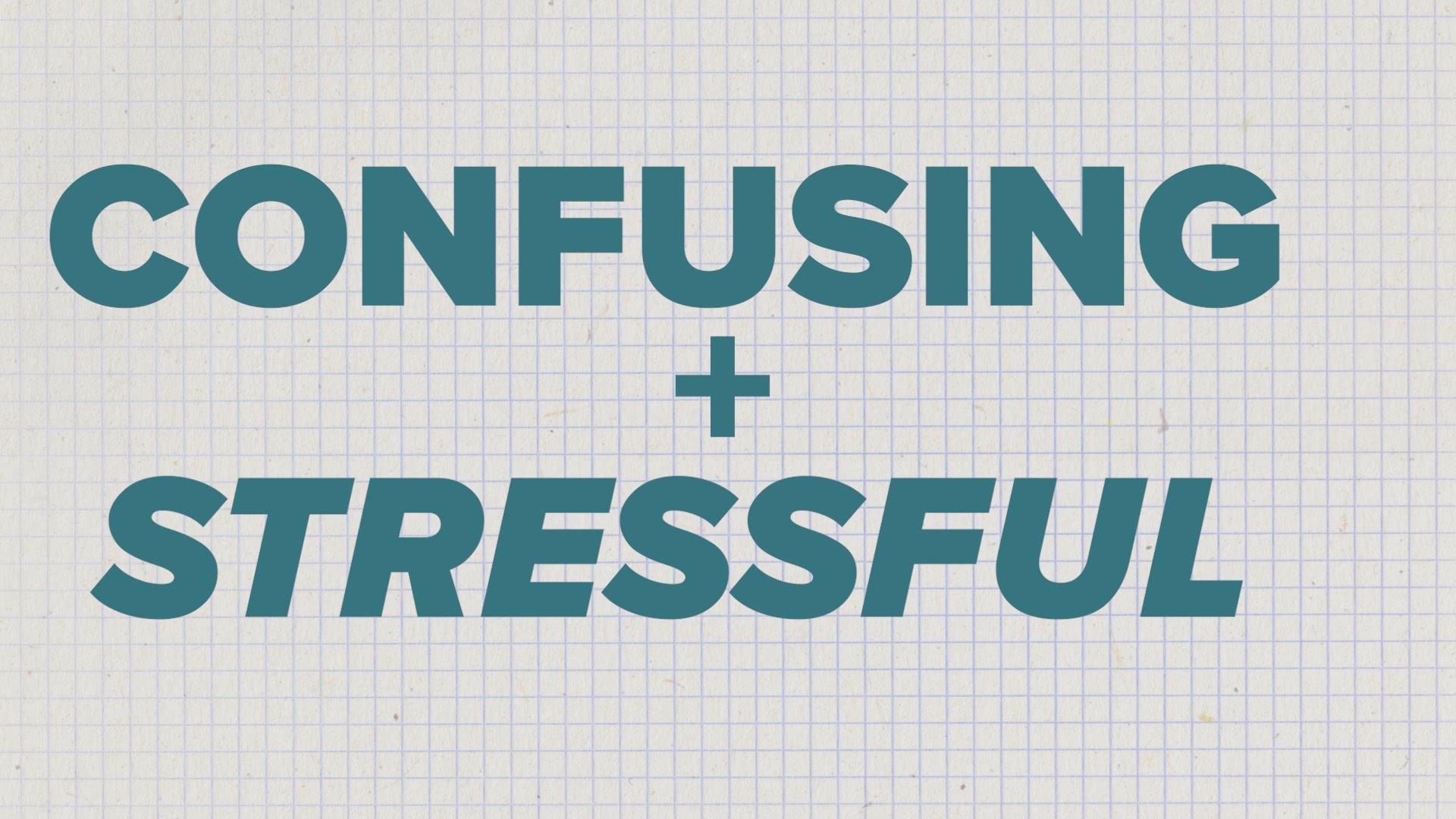HARTFORD, Conn — The bills are mounting for Justin Conrad, who lost his warehouse job three weeks ago and is anxiously awaiting his first state-provided unemployment check. Compounding his stress, his state, Connecticut, can't say when Conrad will get the additional $600 a week in benefits that the federal government is providing in an economic relief package.
“I have no money coming in,” says the 39-year old in Norwich, Connecticut. "And this week I have to pay my utility bill,” he added with a nervous laugh. “With nothing coming in and very little anyone can say, it’s hard.”
Connecticut's labor officials are scrambling to reprogram their computers to handle the additional unemployment payouts. Its decades-old system can process weekly payments only in the hundreds of dollars, or three digits. Problem is, the additional $600 from the federal government extends the payments into four digits.
Most other states have started to provide the extra federal jobless aid, though many did so only this week, nearly a month after businesses began shutting down across the country because of the coronavirus outbreak. At least 32 states will provide the extra federal benefits by the end of this week. California, the most populous state, provided its first extra payment on Sunday.
But several large states — among them Washington, Colorado, Wisconsin and Nevada — were still struggling to process those payouts as of late Tuesday.
The disparity reflects the patchwork nature of America's unemployment benefits system: Benefits and eligibility rules vary sharply from state to state. And the slow and fitful distribution of payments points to the antiquated information technology that many states still rely upon for unemployment payments. Roughly two-thirds use a near-obsolete programming language, COBOL, that dates to the 1970s.
The situation has been frustrating and worrisome for the laid-off. Conrad is also a plumber and is looking for side jobs. "But even that's very limited, because nobody wants you anywhere near their house,” he said.
As a single father with custody of a 16-year old son, "I can only do so much, which he understands," Conrad said. “It’s like, ‘Eat what you can, but not too much.'”
Across the country, state officials say they're working as fast as they can to process and distribute benefits.
“Once programming is complete, we must test to ensure accurate integrity and accounting measures,” said Nancy Steffens, a spokeswoman for Connecticut's Department of Labor, who came out of retirement to help the agency amid a crush of jobless claims. She acknowledged that the aging COBOL system has made it “challenging” to handle the federally provided aid.
Michele Evermore, an analyst at the National Employment Law Project, noted that the additional federal benefits provide crucial support for millions. For a typical laid-off U.S. worker, state unemployment aid alone equals only about half the income the worker received from the job that was lost.
In normal times, the lower payments are meant to encourage people to quickly look for a new job. But in this case, the viral outbreak has shut down businesses, and Americans are being urged to stay home to avoid infections. The additional federal unemployment aid enables more people to follow those guidelines and not go out seeking jobs that don't exist in many cases.
“I actually view the $600 as an important public health measure, almost more than a financial payment in a way,” Evermore said.
Like other states, Connecticut has been trying simultaneously to overhaul its computer systems and process a record-high surge in jobless claims. Nearly 17 million people have filed for such aid in the just the past three weeks, representing more than one in 10 American workers. The government is set to report Thursday that millions more applied for benefits last week.
Florida's unemployment benefit system has struggled mightily to keep up with the crush, even resorting to the use of paper applications. The state began distributing the additional $600 on Tuesday.
Hundreds of thousands of Floridians who sought jobless aid encountered an online portal that crashed and phone systems that kept them on hold for hours. Now, the belated distribution of the federal benefits will be a huge relief for people like Desi Marinov, 42, a former flight attendant in Fort Lauderdale. She's been cutting back on her prescription medications and reducing her cellphone use. And she's asked her landlord to defer her rent.
“Any penny counts, especially when getting my job back is uncertain,” Marinov said.
Just six weeks ago, the unemployment rate was at a 50-year low, and few worried about filing for unemployment. Analysts say that lack of concern extended to many state officials. Some sought to reduce jobless-aid expenses. Florida and North Carolina, for example, reduced the number of weeks that recipients were eligible from what had been a standard 26 weeks across all states.
Many states also neglected to upgrade their systems, even though money to do so was included in a 2009 federal stimulus package. Evermore said such upgrades are complicated by the fact that states have varying eligibility standards and benefits amounts, making off-the-shelf software solutions difficult.
Some states banded together to buy the same software and then customize it. But those efforts were hampered when newly elected governors occasionally didn't want to collaborate with other states, Evermore said. That's resulted in technology problems that are rare in the private sector. In some states, for instance, if applicants forget their password to their state's online system, it must be mailed to them, Evermore said, prolonging the difficulty of completing a filing.
Still, for those out of work who have already received the $600, it's been a lifeline. They include Mirian Carpio Carpio, 34, who was laid off a week ago from her housekeeping job at The Marquette Hotel in downtown Minneapolis. She received her $600 federally provided benefits by direct deposit last Thursday and separately received $300 in regular state unemployment aid.
Her husband still has his job cleaning offices. Carpio Carpio is hoping to return to her old job when the virus outbreak eases. But many economists say the hotel business may never fully recover as companies hold more video conferences and cut back on travel.



